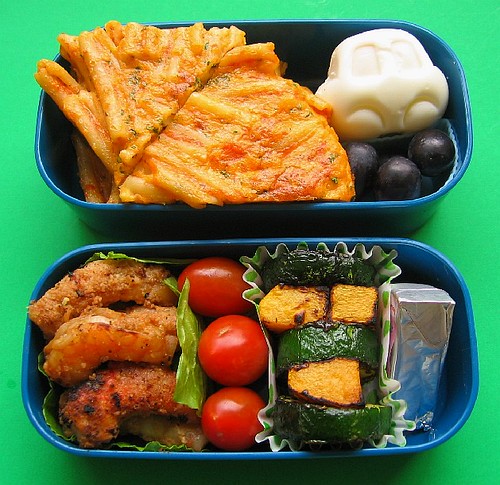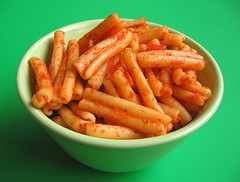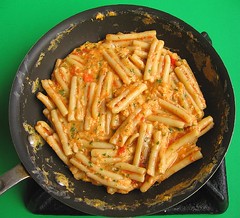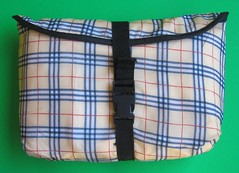
The kitchen may well be the most used room in the home. We prepare food there, eat there, even entertain there. Given the amount of time spent there, along with the nature of activities that go on in it, the potential for kitchen accidents is quite high. In this first of a two part series on Safety in the Kitchen, we look at preventative measures that can be taken to reduce the likelihood of accidents occurring in our kitchens.
Although it’s impossible to foresee every type of accident that might occur in the kitchen, there are certain accidents that we see over and over again. Often, these could have been prevented by taking appropriate safety measures. The following are some ideas to minimize the risk of injury to yourself or your loved ones. Although most of them are common sense, it never hurts to go over and understand them.
Preventing slips and falls
- Clean messes and spills immediately to prevent slipping and falling.
- Do not stand on unsteady objects to reach overhead items.
- Keep the floor clear of objects that may pose tripping hazards, such as boxes, groceries, pets, even small children!
Preventing cuts and scrapes
- Use knives on a proper cutting surface. While they aren’t in use, place knives on a flat, solid surface – away from the edge of counters, tables, etc.
- Never leave knives in dishwater – it may cut the unsuspecting dishwasher. Wash and dry knives separately.
- Clean up broken glass slowly and thoroughly. Dispose of glasses, plates, etc. that are chipped or cracked before they shatter or break in usage.
- Keep all sharp objects out of the reach of children.
Preventing poisoning (chemical, food…)
- Wash hands before you begin working in the kitchen, as well as regularly as you work.
- Lock cleaners and chemicals away from children – either by putting child proof mechanisms on kitchen cabinets or keeping them in another secured area.
- If chemical cleaners or other dangerous items must be kept in the kitchen, store them at the lowest points so that any leaks will not contaminate food.
- Wash fresh food and produce prior to preparation.
- Follow directions when preparing meats, poultry, eggs and seafood. Internal temperatures safe for consumption are as follows:
- beef, lamb and veal ~145F (63C)
- pork and ground beef ~160F (71C)
- whole poultry and thighs ~180F (82C)
- poultry breasts ~170F (77C)
- ground chicken or ground turkey ~165F (74C).
- eggs ~160F (71C)
- seafood ~145F (63C)
- Do not thaw frozen meats, poultry etc. in the kitchen sink or on the kitchen counter. Microwave to defrost, if possible.
- Always wash contaminated surfaces immediately.
- Wash can lids prior to opening, and avoid cans that have dents or other surface compromises.
- Keep your refrigerator set ~40F (4C).
- Foods should either be hot or cold – lukewarm foods encourage bacterial growth, leading to food poisoning, or quicker spoilage.
Preventing Fires and Burns
- Keep a fire-extinguisher in your kitchen. Be sure to read and understand how to use it properly – i.e. spraying the SOURCE of the flames, not just the flames themselves.
- Keep flammable items away from burners – this includes things such as curtains, oven mitts, napkins, paper towels, etc.
- Keep pot handles turned away from the edge of the stove (not over adjacent burners), and keep hot dishes away from the edges of counters, stoves, tables, etc. where they may be pulled down or knocked over.
- Keep flammable materials, and materials with vapours away from the stove and range, as they may spontaneously ignite.
- Do not give young children pots and pans to play with – they may grab these ‘toys’ when they are filled with hot items.
- Use the appropriate oven mitts or pot holders to handle hot dishes. Be wary of opening lids of very hot or boiling food items as steam can cause serious burns.
- Know what to do in case of a grease fire:
- Cover the pot or pan with a large and heavy lid, or larger pan. Turn off heat – or keep the oven door closed. All of these tactics can help ‘smother’ the flame.
- NEVER try to put it out with water!
- Use a fire extinguisher, fire blanket, or even baking soda as a means to put out the fire.
- Make sure all burners and the stove are turned off when not in use.
Preventing general injuries
- Read and understand how to operate your appliances. Keep their cords neatly away from the edges of counters, tables, etc. to prevent them from being pull over the edge.
- Keep a well stocked first aid kit in the kitchen, and be sure that everyone knows its location.
- Keep emergency numbers (fire, police, poison control) near the telephone and be sure everyone is aware of them.
- Keep long hair tied back, and do not wear dangly jewelry or loose clothes while you are working.
- Pay attention to what you are doing, whether it is cutting up food, cooking on the stove, using a mixer, etc. Never leave these items unattended.
Although this is not an exhaustive list, I hope that this will help you reconsider safety in the kitchen. Do you have safety tips you follow to keep yourself and others safe? We’d love to hear about it in the comments section!
Until next time, I wish you health, happiness, and SAFETY!
Additional Resources:
Kitchen Safety - http://www.cdc.gov/nasd/docs/d000801-d000900/d000825/d000825.html
General Safety Around the Kitchen -http://www.premiersystems.com/recipes/kitchen-safety/cooking-safety.html
KITCHEN SAFETY - http://www.ci.phoenix.az.us/FIRE/kitchen.html
Food Safety Test - http://www.fda.gov/fdac/features/895_kitchen.html
Kitchen Safety Checklist - http://www.homesafetycouncil.org/safety_guide/sg_kitchen_p001.pdf

If you like what we girls do here and would like to vote for us in the Blogger's Choice Awards here. Thanks for your support!
Are you interested in contributing to The Daily Tiffin? Drop us an email: blogmeeta@gmail.com. We look forward to hearing your ideas.
This Post was written by Gilly from Humble Pie








































